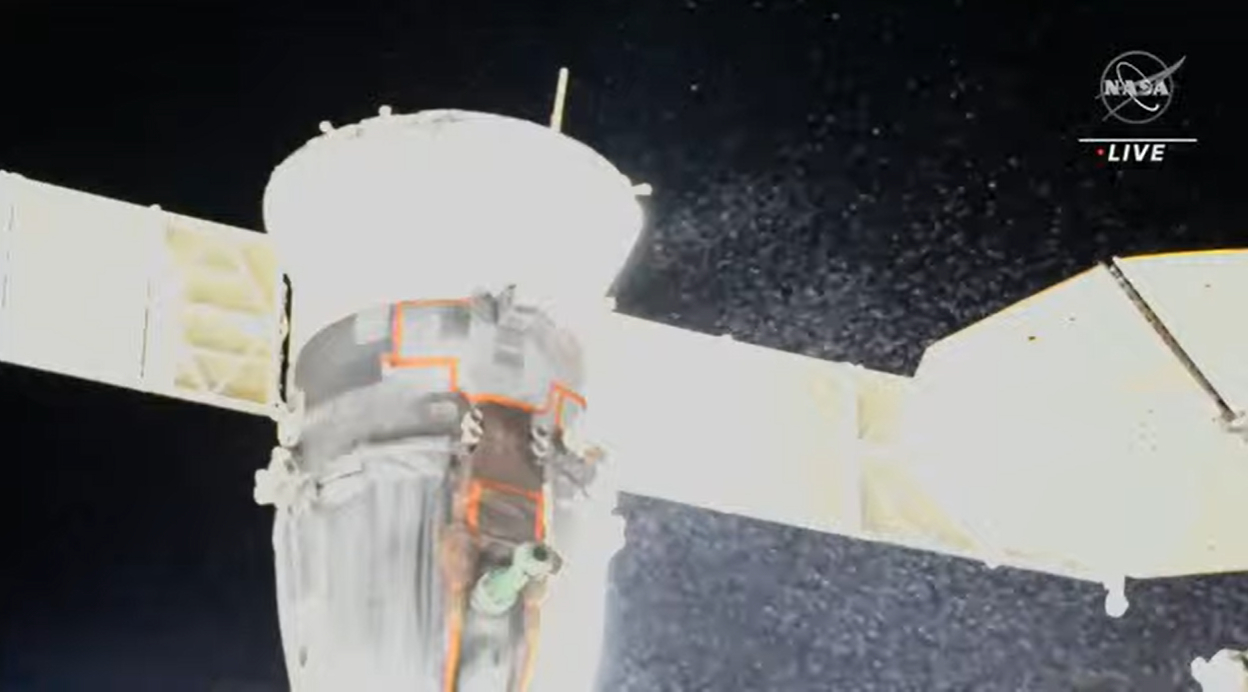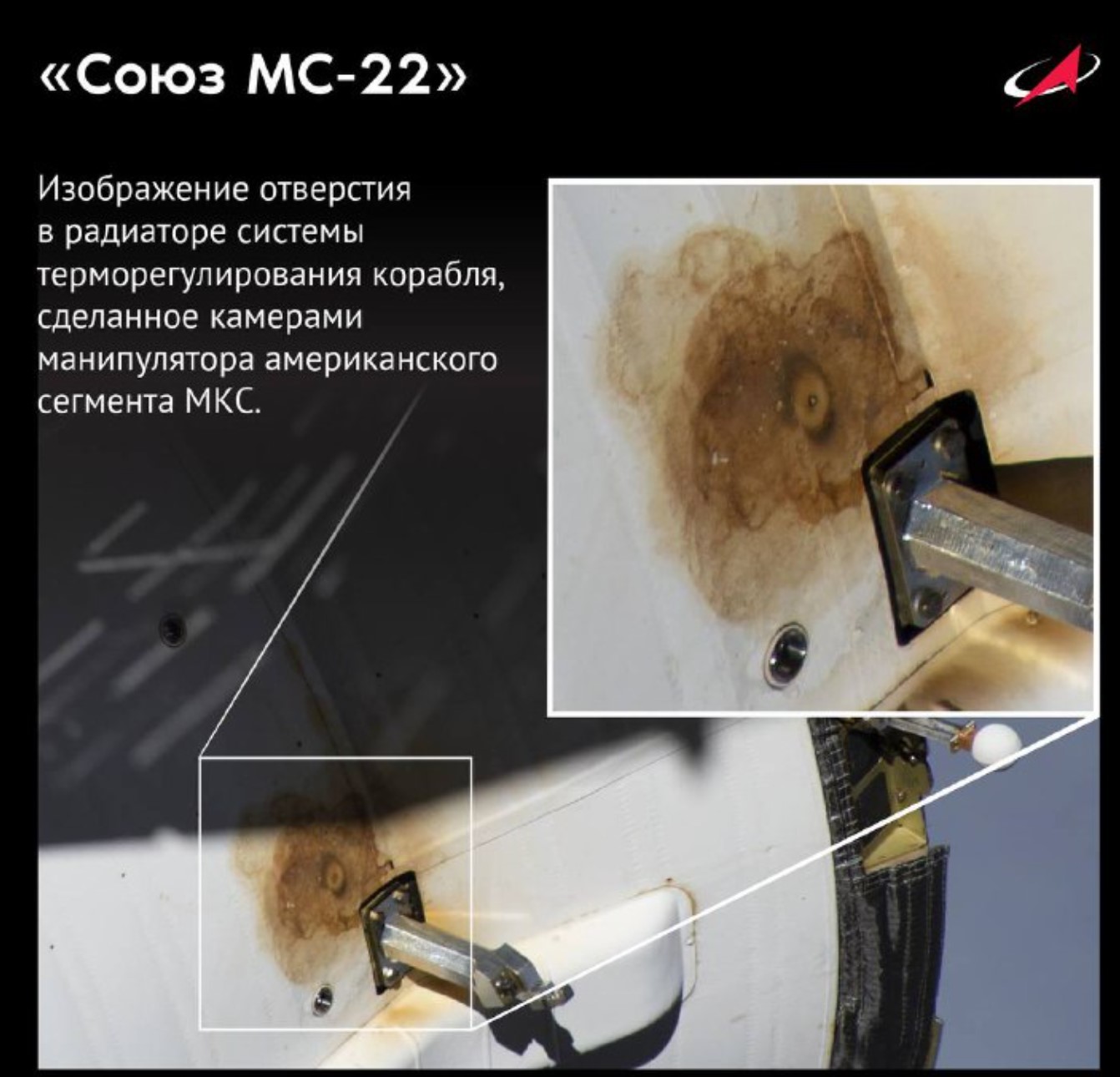Russia looking into possibility of manufacturing defect on leaky spacecraft

Russia is investigating the possibility that a manufacturing defect caused two of its spacecraft to spring coolant leaks in a two-month span recently.
On Dec. 14, 2022, a Soyuz crew-carrying spacecraft docked at the International Space Station (ISS) lost all of its coolant to space, an issue that Russian officials soon attributed to a likely micrometeoroid strike.
Then, on Feb. 11, a robotic Progress freighter at the ISS sprang a leak of its own. Roscosmos has tied that issue to an "external influence," possibly a problem incurred during the cargo craft's October 2022 launch. But that's far from a final verdict. Indeed, the back-to-back incidents have prompted Russia's space agency Roscosmos to take a closer look at the nation's spacecraft manufacturing processes, according to Joel Montalbano, NASA's ISS program manager.
Related: Hole in leaky Soyuz spacecraft not caused by Geminid meteor
"In addition to MMOD — micrometeoroid orbital debris — the team and Roscosmos and Energia, they're looking at manufacturing," Montalbano said on Saturday night, during a press conference that discussed the successful return to Earth of SpaceX's Crew-5 astronaut mission a few hours earlier. (Energia is the chief contractor for Russia's human spaceflight program; the company builds both the Soyuz and the Progress.)
"Is there something there? Did something change in the production of these vehicles?" he added. "Which is exactly what we would do on our side, right? You look at all the data you have, look at everything."
Roscosmos deemed the leaky Soyuz, known as MS-22, unfit to carry its three crewmembers — NASA's Frank Rubio and cosmonauts Sergey Prokopyev and Dmitry Petelin — home to Earth, except in the case of an emergency evacuation of the ISS. So, last month, Russia launched a replacement Soyuz, MS-23, to the orbiting lab for the three spaceflyers.
Breaking space news, the latest updates on rocket launches, skywatching events and more!
Montalbano said NASA is confident in the new Soyuz, but the agency will keep its eyes open for any new developments.
"Confidence is good, but we're always looking," he said. "You know, that's what we do best in the space program. And that's done on both the Roscosmos side as well as the NASA side."
Related: Russia releases 1st images of damage to leaky Soyuz spacecraft (photos)
Soyuz MS-22 carried Rubio, Prokopyev and Petelin to the ISS in September 2022. The trio were supposed to return to Earth this month, but the leak drama has pushed their homecoming back to September.
That trip will be made aboard Soyuz MS-23. MS-22, meanwhile, is scheduled to land later this month, in an uncrewed state. Unfortunately, the piece of the spacecraft where the leak occurred will break up during reentry to Earth's atmosphere, Montalbano said, so engineers won't get to examine the damaged hardware up close.
The same is true of the leaky Progress: The freighter left the ISS last month and met its fiery end in our planet's thick air. (Progress vehicles are expendable; they aren't designed to survive reentry.)
Mike Wall is the author of "Out There" (Grand Central Publishing, 2018; illustrated by Karl Tate), a book about the search for alien life. Follow him on Twitter @michaeldwall. Follow us @Spacedotcom, Facebookand Instagram.

Michael Wall is a Senior Space Writer with Space.com and joined the team in 2010. He primarily covers exoplanets, spaceflight and military space, but has been known to dabble in the space art beat. His book about the search for alien life, "Out There," was published on Nov. 13, 2018. Before becoming a science writer, Michael worked as a herpetologist and wildlife biologist. He has a Ph.D. in evolutionary biology from the University of Sydney, Australia, a bachelor's degree from the University of Arizona, and a graduate certificate in science writing from the University of California, Santa Cruz. To find out what his latest project is, you can follow Michael on Twitter.

